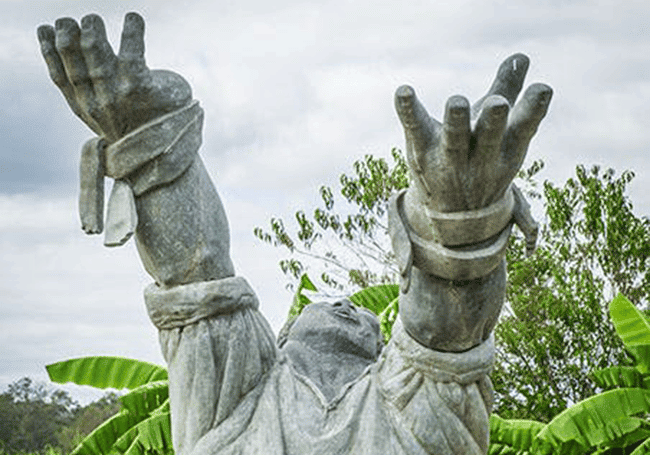I currently teach U.S. History I and II to 10th and 11th graders, respectively. We wrapped up our semester this week by holding midterm exams. In lieu of a traditional exam for one of my U.S. History I classes, I had them complete the Zinn Education Project activity “How We Remember.” I had read Clint Smith’s book last year and was blown away by how the history is handled at many of the highlighted locations and his extreme attention to detail.
I’ve since used excerpts from Smith’s book in class, but this activity really had the students use the text in a way that required them to interact with the sites, as well. The commemorations were thoughtful and the students did an incredible job bringing justice to the history of enslavement at those locations. Here are some examples:
The students who were assigned New York City created three works of art to display in Central Park as a way to commemorate work of Black abolitionists and Seneca Village. One work of art was a 3-D rendering of a bed with turned down bedding and a doll on the floor. It was meant to signify the upending and displacement of the Seneca Village community.
The students who were assigned Angola created a script for a guided tour. They included images and provided visuals to go along with the script. The brutal facts of Angola as a plantation and as a prison were presented. In the end, “visitors” were encouraged to sign a petition to close Angola. The plan was to make it a museum that focuses on the history of Black Americans’ struggles both during and after enslavement.
The students who were assigned Monticello created a sculpture which highlighted a number of the enslaved at the plantation. The sculpture included silhouettes of mothers and fathers and beads to represent their children. The purpose was to highlight family separation. On the top of the sculpture was a representation of Monticello; placing it on top of the enslaved was meant to demonstrate the fact that Monticello and Jefferson’s success came at the expense of the enslaved.
Thank you for such an engaging and important activity. I look forward to using it again in the future.







Twitter
Google plus
LinkedIn